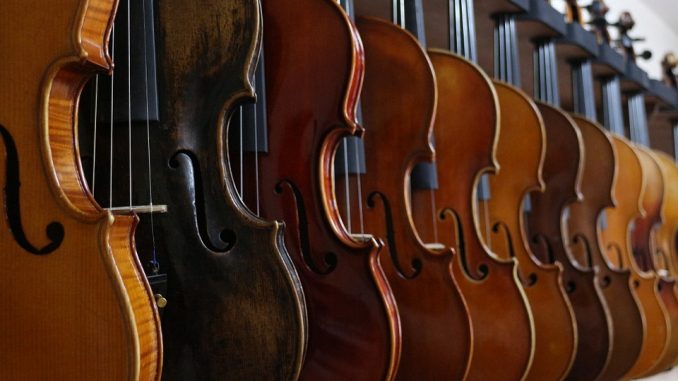
Members of the community gathered in the New Paltz United Methodist Church on a warm and sunny Sunday afternoon to hear the Poné Ensemble for New Music perform its spring concert “Urban Sounds,” featuring music by members of the New York Composers Circle (NYCC).
The Poné Ensemble was founded in 1974 by Gundaris and Karen Poné and is dedicated to performing contemporary chamber music of the 20th and 21st centuries of living composers. The Ensemble seeks to “increase the accessibility and enjoyment of contemporary music for appreciative audiences,” the likes of which is unlikely to be heard anywhere else.
Since its founding, the Ensemble has consisted of a core of musical instruments: violin, viola, cello, piano, flute and piccolo, clarinet, oboe and English horn. Of the current ensemble of seven musicians, there are four faculty members of the SUNY New Paltz Music Department, including Dr. Joel Evans (oboe), Dr. Carole Cowan (violin), Susan Seligman (cello) and Ruthanne Schempf (piano).
The other members are principal flutist of the Hudson Valley Philharmonic Orchestra (HVP) Marcia Gates (flute), assistant concertmaster of the HVP Emily Faxon (violin) and principal clarinetist with the Santa Fe based 20th Century Unlimited Contemporary Music Ensemble Larry Tietze (clarinet).
The NYCC “is an artistic and educational organization dedicated to new music — its creation, its performance and the development of new audiences,” according to its website. For this concert, the Ensemble performed music of eight composers, each very different from one another, and one that was performed for the very first time.
The Ensemble began with “Scatterloop,” for violin and piano by Max Duykers, a fun, playful piece with dark harmonies. The duet reminisced music of a ballet; the piano slowly crept in and out, giving the violin a chance to solo, but returned sounding like wind and both instruments continued to crescend through the end of the piece.
“I’m interested in how traditional music syntax is comprehended by the listener, and how a piece of music can live on the edge between expected logic and experimentalism,” Duykers said.
Next in the program was “Intermezzo” for oboe, violin, cello and piano by Susan J. Fischer. Fischer explained how her composition is comparable to two French impressionist composers, Claude Debussy and Maurice Ravel. The piece is in Rondo form, a theme that continuously returns throughout, intertwining amongst the instruments while the piano surrounds them with lush chords.
“[It] extended sort of harmonic language and it starts with a melancholy kind of waltz and goes into various kinds of sections and then ultimately returns to this waltz,” Fischer said.
The last piece of the concert was “From Far and Near” for flute, violin, viola and cello by Kevin McCarter, and was the first time it was being performed. McCarter was inspired by two sets of photographs: ones of star fields and distant galaxies taken by the Hubble Space Telescope and the others of terrestrial landscapes with trees, flowers, rocks, streams and waterfalls in both close up and panoramic views. They evoked his imagination and appreciation for “the immensity of the universe and the beauties of our planet.”
“I think it was some of the shapes and textures and colors and just the way that things were arranged in the photos inspired some different ideas and the process of printing the piece suddenly became a process of generating the use of materials through these photographs,” McCarter said. “They invited me to imagine what it might be like to spend a day exploring the landscape of a planet in another galaxy and to wonder how much it might be like a day on the planet we know.”
The other pieces performed were “Breathless” by Hubert Howe, “Suite for Two Flutes, Op. 17” by Kath erine Hoover, “Bass Play Divertimento” by John de Clef Pinerio, “Ikarus – Duo for Binya” by Debra Kaye and “Nocturnes” by Jacob Goodman.
The composers that were present and members of the Ensemble were excited and impressed with the production of each piece.
“I was really happy how everything came together, putting together all of these quintuplets and septuplets,” Evans said. “We had a good time.”
